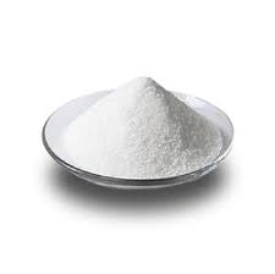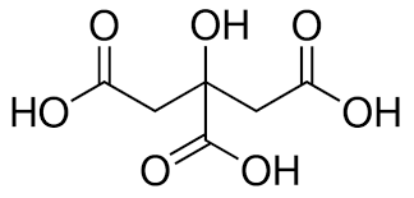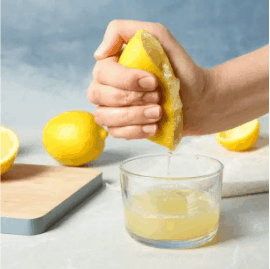What is Citric Acid?
Citric acid is a natural and organic acid that is found in citrus fruits like lemons, limes, and oranges. It has a sour taste and is often used in food and beverage production as an acidifying agent, preservative, and flavor enhancer.
You might recognize it as the tangy taste in your favorite lemonade or the sourness in some of your favorite candies. It’s also used in cleaning products, cosmetics, and pharmaceuticals.
It’s considered safe for consumption and has a wide range of applications due to its versatile properties.
Citric Acid is a food Additive!
The United States Food and Drug Administration (FDA) has affirmed citric acid as GRAS for use in food, which means it is considered safe for consumption based on a long history of common use in food and a substantial body of scientific evidence. (please see 21 CFR 172.822).
Why use Citric Acid in Repellents?
Citric Acid is known to have insecticidal properties and can help to repel certain insects, such as mosquitoes and ticks. Additionally, citric acid can help to enhance the effectiveness of other active ingredients in the bug repellent, making it a useful additive. Citric acid is also a natural preservative and can help to extend the shelf life of the product.
What are some Industrial Uses for Citric Acid?

Citric Acid Powder

The Molecular Stucture of Citric Acid
Citric Acid
in Food Products- Carbonated drinks (sodas, energy drinks, and fruit-flavored drinks)
- Jams, jellies, and fruit preserves
- Pickles, relishes, and salad dressings
- Candy and other sweets
- Canned fruits, vegetables, and tomato products
- Fruit juices and fruit-flavored beverages
- Frozen fruits and vegetables
- Gelatin desserts and puddings
- Cheese and cheese spreads
- Processed meats (sausages, hot dogs, and deli meats)
- Vitamin C supplements
- Baked goods (cakes, cookies, and bread)
- Margarine and shortening
- Ice creams, sherbets, and sorbets
- Wine and other alcoholic beverages
Citric Acid
in Personal Care Products- Shampoos and conditioners
- Body washes and shower gels
- Facial cleansers and toners
- Moisturizers and lotions
- Hand soaps and sanitizers
- Toothpaste and mouthwash
- Bath bombs and fizzies
- Sunscreen and after-sun products
- Baby wipes and diaper creams
- Hair dyes and bleaches
- Deodorants and antiperspirants
- Acne treatments and exfoliants
- Lip balms and lipsticks
- Nail polish removers
- Bath salts and scrubs
How many items in you home contain Citric Acid?
Benefits of Citric Acid in Food Ingredients:
Flavor enhancement: Citric acid is often used as a natural flavor enhancer in foods and beverages, giving them a slightly acidic or sour taste that can balance out sweetness and enhance overall flavor.
Preservation: Citric acid can act as a natural preservative in some foods, helping to prevent spoilage and extend shelf life. It does this by creating an acidic environment that inhibits the growth of bacteria and other microorganisms.
Texture improvement: Citric acid can also be used to improve the texture and mouthfeel of some foods, such as frozen fruits and vegetables. It helps to prevent crystallization and maintain a smooth texture.
Antioxidant properties: Citric acid is a natural antioxidant that can help to protect against oxidative stress and free radical damage. This makes it a valuable ingredient in some health supplements and functional foods.
Nutrient preservation: Citric acid can help to preserve the nutritional content of some foods by preventing the breakdown of vitamins and minerals. For example, it can help to prevent the oxidation of vitamin C in juices and other beverages.
Benefits of Citric Acid in Personal Care Products:
pH balancing: Citric acid can help to balance the pH of personal care products, making them more effective and gentle on the skin.
Exfoliation: Citric acid can act as a gentle exfoliant in some personal care products, helping to remove dead skin cells and improve skin texture.
Antioxidant properties: Citric acid is a natural antioxidant that can help to protect against free radical damage, which can cause premature aging and other skin issues.
Skin brightening: Citric acid can help to brighten and even out skin tone, making it a valuable ingredient in some skin care products.
Preservative: Citric acid can act as a natural preservative in personal care products, helping to extend their shelf life and prevent bacterial growth.
Hair care: Citric acid can help to remove buildup and residue from hair, making it a valuable ingredient in some shampoos and conditioners.
What amazing Chemist found Citric Acid?
The discovery of citric acid is attributed to a Swedish chemist named Carl Wilhelm Scheele, who isolated citric acid from lemon juice in 1784.
Scheele isolated citric acid from lemon juice by using a process of evaporation and crystallization. He began by squeezing lemons to obtain lemon juice and then heated it to remove water and concentrate the acid. Next, he added calcium hydroxide to the concentrated juice, which caused the calcium citrate to precipitate. Finally, Scheele treated the calcium citrate with sulfuric acid to produce citric acid, which he obtained as colorless crystals. He named the acid “citric acid” because he found it in citrus fruits.



The Oxygen Machine
Created by Carl Wilhelm Scheele
Citric Acid

References:
Heaton FW. Citric Acid. In: Ullmann’s Encyclopedia of Industrial Chemistry. Wiley-VCH, Weinheim; 2012. doi:10.1002/14356007.a07_099.pub2
Hussain MS, Fareed S, Ansari S, Rahman MA, Ahmad IZ, Saeed M. Citric acid: a review on its production, applications, and future perspectives. J Food Sci Technol. 2016;53(4):1671-1684. doi:10.1007/s13197-015-1964-1
Kopsahelis N, Karatzas K-A, Efthymiou M-N, et al. Citric acid production from high concentration of d-sugar solutions by Yarrowia lipolytica immobilized on corncob. Bioresour Technol. 2018;267:206-214. doi:10.1016/j.biortech.2018.06.080
López-Gómez A, Pérez-López E, Ruiz-López II, Moreno-Vigara R, Bautista-Gallego J, Yebra-Pimentel I. Citric acid in personal care products: a safety assessment. Int J Cosmet Sci. 2020;42(3):217-226. doi:10.1111/ics.12606
Scheele CW. Om Citron-syran, samt om en del deraf upwunna salter [On citric acid, as well as some of its resulting salts]. Kongliga Vetenskaps Academiens Nya Handlingar [Proceedings of the Royal Swedish Academy of Sciences]. 1784;5:225-241. [In Swedish]
